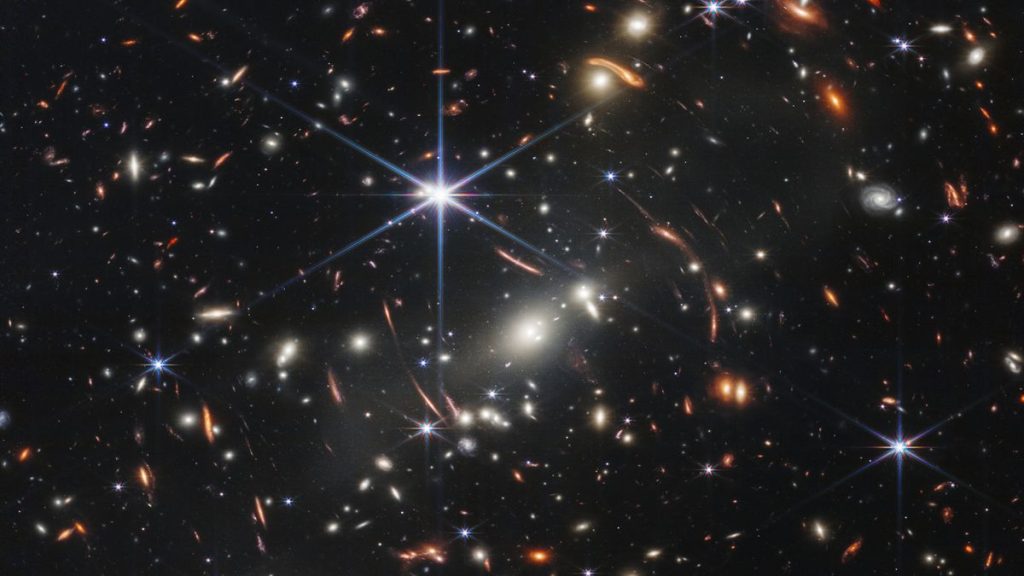Shortly after the James Webb Space Telescope (JWST) began its scientific observations, astronomers announced the discovery of galaxies in the early universe. Too big for its age, too bright, and full of stars While headlines around the world have claimed that these galaxies “overturn” our understanding of the Big Bang, the truth is much more nuanced — and much more interesting.
of The Big Bang Theory this is, History of the Universe Starting in the distant past, when the universe was much smaller, hotter and denser than it is today, the model was first developed in the early 20th century and has survived a series of observational tests, revealing the redshift of light from distant galaxies, Cosmic Microwave Background We study the abundance of light elements, the evolution of galaxies and large-scale structure, and more.
While the Big Bang theory can’t say with certainty which galaxies will appear where, it can speak of probabilities: for example, cosmologists can roughly estimate how many small galaxies there are. Galaxy how many medium-sized and large galaxies appear in a given volume? Age of the Universe but, J.W.S.T. It was not possible to directly observe the early stages of galactic evolution that were beyond the reach of telescopes. Specially designed for studying .
In 2022, astronomers announced the discovery of a surprisingly strangely large, very distant galaxy. They Redshift It existed only 200 to 250 million years after the Big Bang.
Related: No, the Big Bang theory is not “broken.” Here’s why:
These galaxies seemed so far beyond the predictions of the Big Bang theory that it was almost like finding teenagers in a kindergarten classroom.So what was going on?
Bending Cosmology
Brazen headlines declaring the end of the Big Bang theory grabbed attention. But these articles left out a key detail: astronomers had estimated the redshifts of these galaxies using a technique called photometry, but this was highly uncertain. To fully assess these galaxies’ ability to “break” cosmology, we would have to await more precise measurements of their redshifts, and therefore their ages.
A few months later, when more precise measurements were finally completed, those galaxies went from record-breaking to just… Normal galaxy For example, the redshift of one galaxy was revised from over 16 to 4.9, and its age was changed from 240 million years after the Big Bang to more than 1 billion years, more than enough time for the standard Big Bang theory to explain the size and shape of the galaxy.
However, new redshifts for other galaxies were identified, along with less exciting corrections. Jade-GS-z14-0 is the most distant galaxy currently known, with a redshift of 14.32. This galaxy was alive and well when the universe was just 290 million years old.
Astronomers expected the galaxy to exist 290 million years after the Big Bang, which is why they built the JWST, and as far as galaxies go, JADES-GS-z14-0 is indeed young: it’s only 1,600 years old. Light years Compared to the whole milky way 100,000 light years away. But interestingly, this galaxy is quite bright. Performer — Not enough to completely break it Cosmology But it is enough to raise some questions about the origin and development of the first galaxies in the universe.
Constructing a cosmology
It’s entirely possible that the Big Bang theory is wrong. Scientists must remain mentally strong enough to accept that possibility. But with such a wealth of supporting evidence, it’s unlikely that the Big Bang will be overturned by a single observation. And it’s worth reiterating that the JWST is exactly what we designed and built it to do: answer the big unanswered questions about how the first stars and galaxies emerged.
It is entirely possible that cosmologists will be able to explain the emergence of galaxies like JADES-GS-z14-0 within the framework of the Big Bang without any major modifications. Black Hole Supernova
Or perhaps our initial observations are biased towards these small but bright outliers, and further surveys will reveal a larger population of more mundane galaxies, thereby Galaxy formation model.
And finally, maybe we need to add something new. The Universe ,for example Dark Energy Evolve time It is unlikely that such a galaxy could have formed so early.
This would be exciting enough on its own, without having to upend the Big Bang as we know it: the universe has enough mysteries and hidden places to keep astronomers up at night thinking about the possibilities, and up in the morning trying to figure them out.


